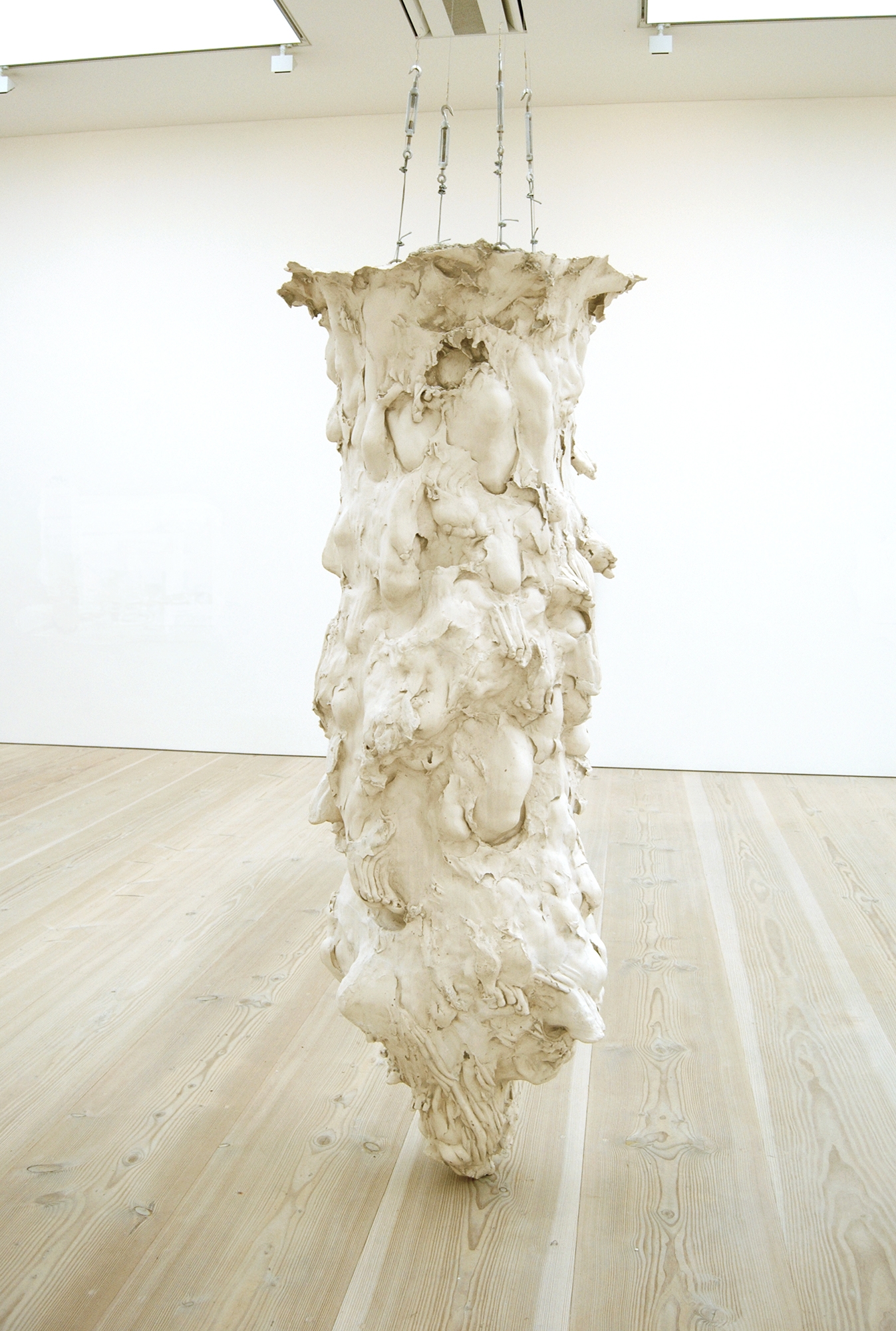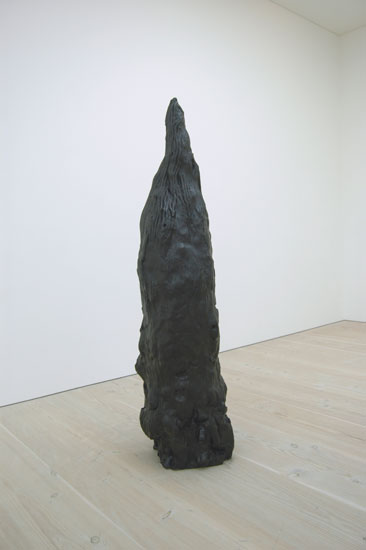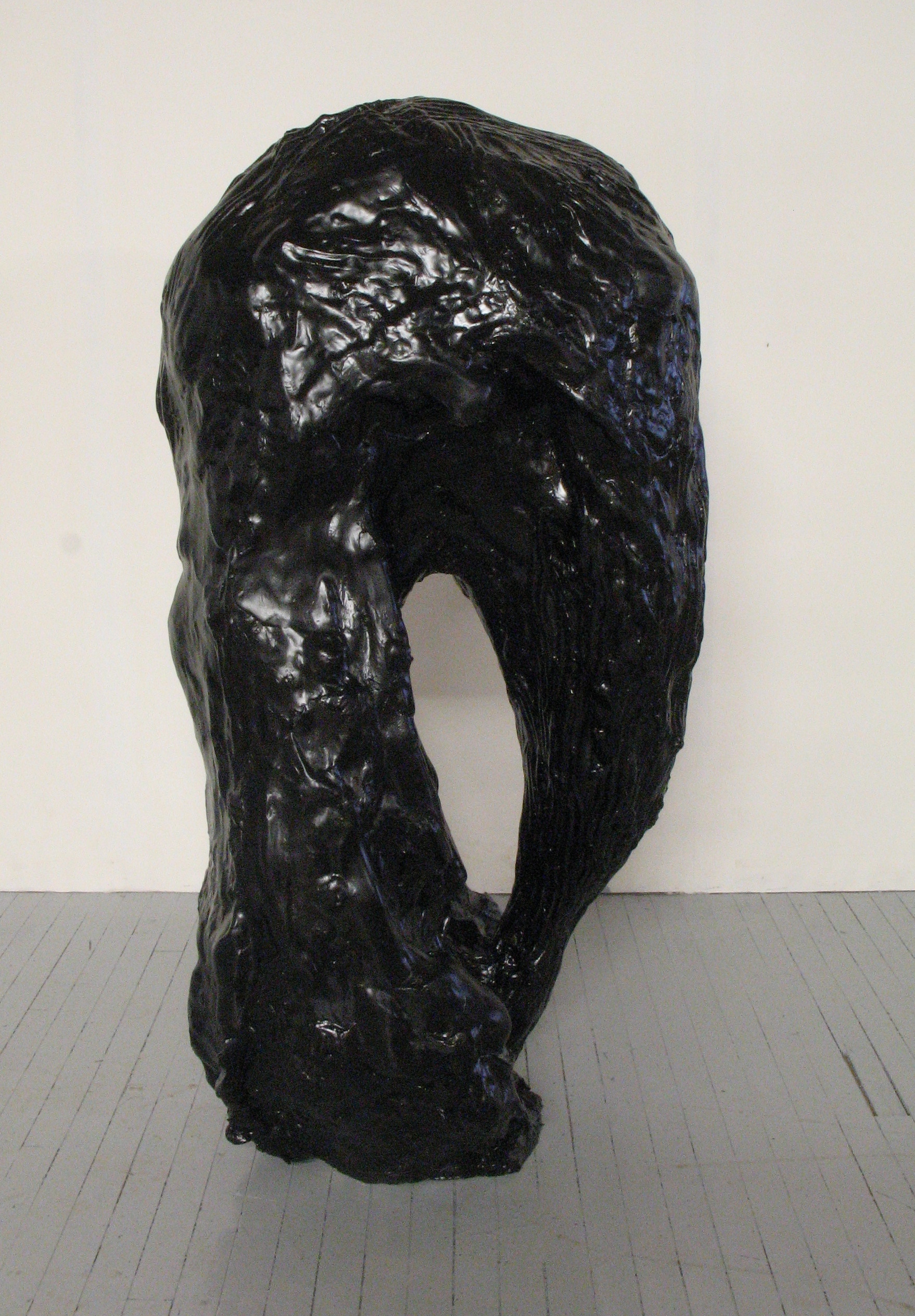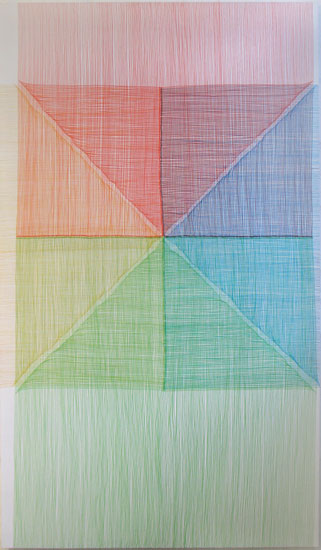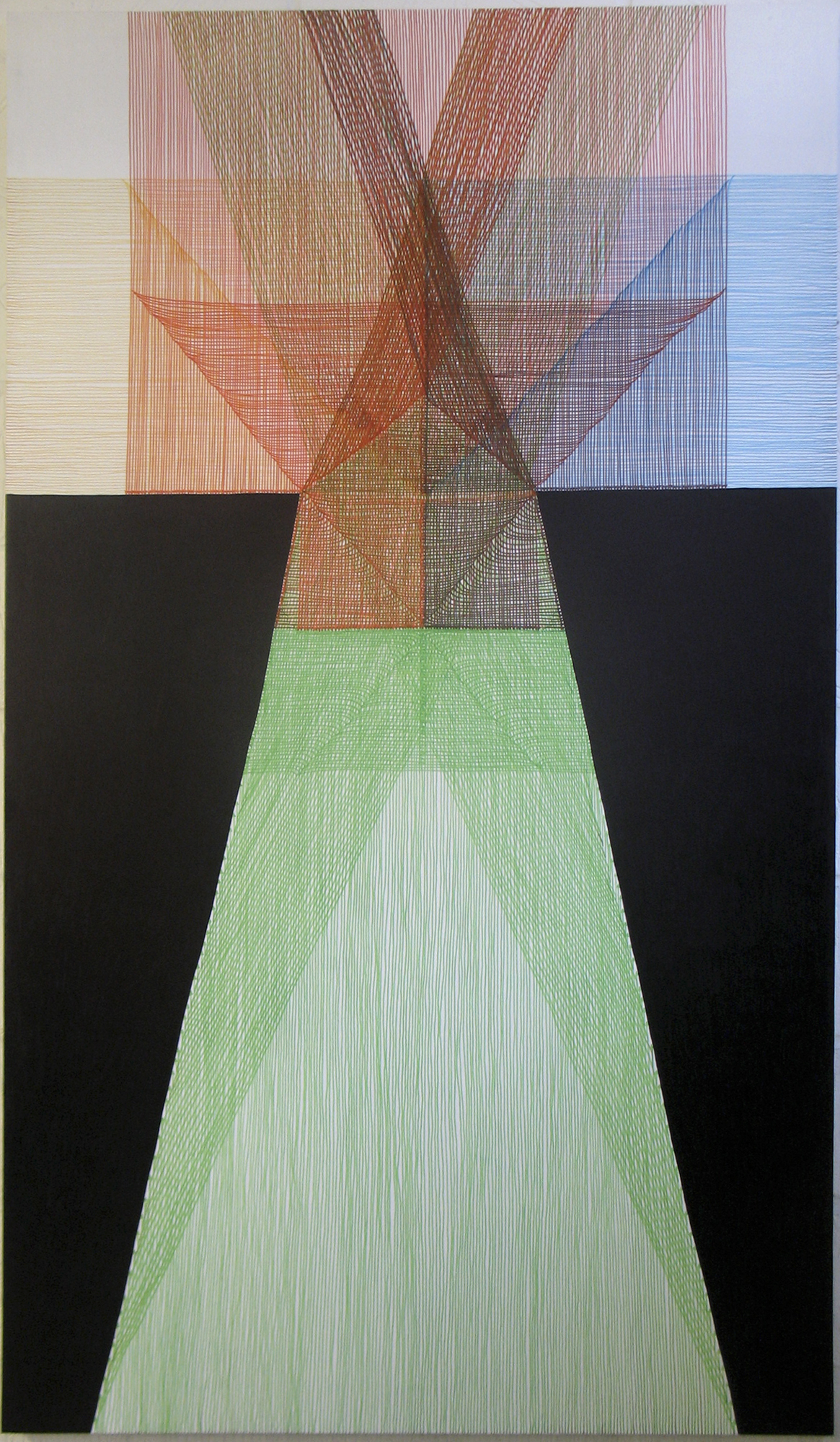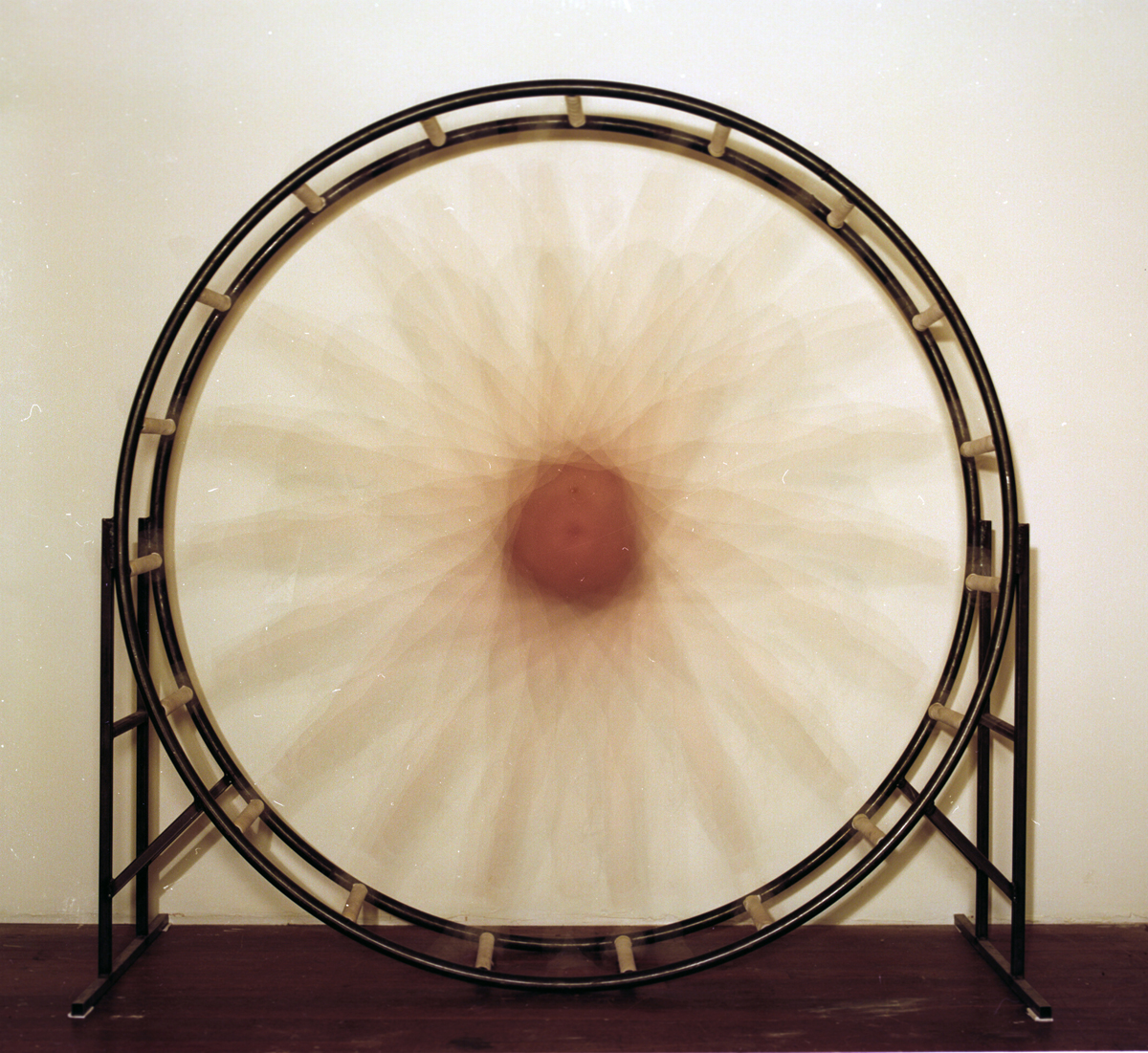Up Down In Out, April 2 - May 5, 2009, Trolly Gallery, London, U.K.
Down, 2009
Up Down In Out, April 2 - May 9, 2009, Trolley Gallery, London U.K.
The first solo show of Brazilian artist Juliana Cerqueira Leite, "Up, Down, In, Out", centred around "embodiment" and more specifically to the action and relation to the artist"s body in physical space. Her ideas stem from an exploration of science and dimensions of body in space, as well as its movement, discipline and endurance.
This is expressed in sculptural form and drawing, with a video piece of a performance previously engaged by the artist in her practice. Two columns allege to digging processes, where in one the action is "up" and the other "down". Starting with two solid blocks of clay 210cm high and 90 cm square, Leite dug down and then up, using nothing primarily but her own hands and by proxy her entire body, scooping out and removing handfuls of clay until a tunnel had been dug throughout the length of the clay. The process was under self-imposed instruction to take up the least amount of space possible. The resulting tunnels were cast in plaster and are presented in the gallery, where the shapes of the body can be defined in the sculpture's surface, with evident hand and finger gestures left in the clay, as well as the impact of her naked body pressed against the emerging structure of the tunnel.
The process is influenced by 18th to early 20th century discoveries and ideas in science and philosophy. In particular a fascination with the escapologist Houdini at a time when spiritualism was popular and Freud"s psychology was emerging, his overcoming of impossible physical feats and debunking of supernatural powers through his own bodily contortion and control, is evoked here with the digging of the tunnels. A means of escape, relying solely on the body and limiting space and light to the extreme, we are left under no illusions ourselves that the process was unsettling and challenging for the artist.
Johann Joachim Winckelmann, the 18th century German philosopher and art historian, believed the classical marble statues of ancient Greece and Rome were a result of sun drenched days studying the male form in the gymnasium, here we can trace contemporary ideas of the body undergoing labour and exertion in Leite"s column, a negative cast depicting innate movement and dimension. It is seemingly non-figurative but in fact completely so, and confuses notions of gender through the phallic columns created through the body of a female. The physical determination and ultimate control over the clay material made by an assertive female body is not however a feminist reflection, but a universal leveller of the human body, and the parameters that affect us all.
The work is figurative yet formalist at the same time. If Pollock"s "action paintings" express his movement and action then these works could be described as "action sculptures." The clay acts as a memory of the action, eternalized in the cast. We also are reminded of Anthony Gormley"s use of the artist's body to the space around it, whilst up close the imprints of Leite"s naked body recall the marks of Richard Long.
The drawings follow the dimensions of the body from the 3D into the 2D. they relate to scientific principles of waves and particles, as each primary color line follows a path that meets and interferes with the other color lines, resulting in a pattern mapping out the dimensions. Again it is this embodiment of the 3d figurative aspect of the body translated into 2d line and form, the colors mixing optically, she cancels out the space between her with black, where no colors exist and which therefore denotes space between physical entities. - Trolley Gallery
Up Down In Out, installation image, April 2 - May 9th, 2009, Trolley Gallery, London, UK
Up Down In Out, installation image, April 2 - May 9th, 2009, Trolley Gallery, London, UK



